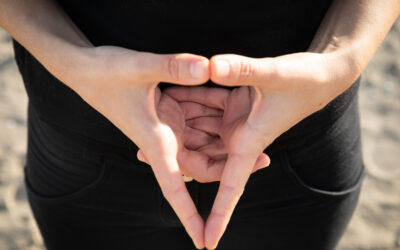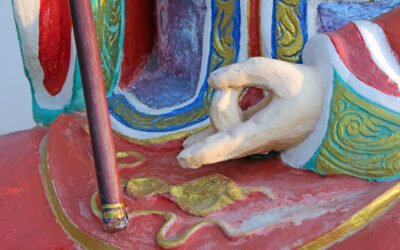The bhumisparsha mudra also known as the earth touching gesture is a symbolic hand gesture commonly practiced in various forms of meditation and yoga. This mudra holds significant meaning and is believed to have numerous benefits for the mind, body and spirit. In this article we will explore the potential benefits of bhumisparsha mudra, possible side effects and a step by step guide on how to perform this mudra correctly. Whether you are a seasoned practitioner or someone looking to incorporate mudras into your daily routine, understanding the bhumisparsha mudra can enhance your spiritual practice and overall wellbeing.
bhumisparsha mudra benefits.
Bhumisparsha mudra, also known as the gesture of touching the Earth, is a powerful hand gesture in yoga and meditation that offers numerous benefits to the practitioner. This mudra is formed by bringing the fingertips of the right hand to touch the ground, while the left hand rests on the lap or thigh.
1. Grounding and Stability.
Bhumisparsha mudra helps to connect with the Earth’s energy, promoting a sense of grounding and stability. It is particularly beneficial for individuals who feel scattered, anxious, or disconnected from their surroundings. By touching the Earth, this mudra helps to anchor one’s energy and establish a solid foundation.
2. Enhances Concentration.
Practicing bhumisparsha mudra can improve focus and concentration. By directing the attention to the act of touching the ground and feeling its texture, the mind becomes focused and present. This can be particularly helpful during meditation or when engaging in activities that require mental clarity.
3. Cultivates Inner Strength.
The gesture of touching the Earth signifies strength and determination. Bhumisparsha mudra empowers individuals by reminding them of their innate inner strength and resilience. This mudra helps to foster a sense of self-confidence, courage, and determination to overcome obstacles or challenges.
4. Releases Negative Energy.
The Earth is known to absorb negative energy, and bhumisparsha mudra facilitates the release of any accumulated negative energy within the body and mind. By touching the Earth, this mudra allows for the release of tension, stress, and emotional blockages, creating space for positive energy to flow freely.
5. Promotes Connection with Nature.
Bhumisparsha mudra encourages a deeper connection with nature and the environment. By consciously touching the Earth, individuals become more aware of the interconnection between themselves and the natural world. This can lead to a greater sense of appreciation, gratitude, and harmony with the Earth and its elements.
6. Balances Energy.
This mudra helps to balance the energy within the body. By connecting with the Earth’s energy, bhumisparsha mudra can harmonize the flow of energy throughout the body, bringing a sense of equilibrium and stability. It is particularly beneficial for individuals experiencing imbalances in their root chakra, which is associated with grounding and stability.
7. Cultivates Mindfulness.
Bhumisparsha mudra serves as a reminder to be fully present and mindful in the present moment. By touching the Earth, individuals are encouraged to let go of distractions, worries, and thoughts about the past or future. This mudra promotes a state of mindfulness, allowing individuals to fully experience and appreciate the present moment.
| 💡 Tips FreakToFit.com Incorporating bhumisparsha mudra into a regular yoga or meditation practice can provide a multitude of benefits, both physically and mentally. By connecting with the Earth’s energy and fostering a sense of grounding, stability, and mindfulness, individuals can experience a deeper sense of well-being and a greater connection with the world around them. |
side effects of bhumisparsha mudra.
There are several potential side effects that may occur when practicing the bhumisparsha mudra, also known as the “earth touching gesture.” While this mudra is generally safe and beneficial, it is important to be aware of the following possible adverse effects:
1. Physical discomfort.
Some individuals may experience physical discomfort or strain when performing the bhumisparsha mudra, especially if they have pre-existing conditions such as arthritis or carpal tunnel syndrome. This may manifest as pain or stiffness in the hands, wrists, or fingers.
2. Overstimulation.
The bhumisparsha mudra is known to activate energy channels in the body, which can result in a heightened state of awareness. While this is usually desirable, it can potentially lead to overstimulation, restlessness, or difficulty in calming the mind.
3. Emotional release.
This mudra is believed to help release emotional blockages and promote emotional healing. However, during this process, individuals may experience unexpected emotions or memories resurfacing, which can be intense and overwhelming.
4. Spiritual awakening.
The bhumisparsha mudra is often associated with spiritual growth and self-realization. While this can be a positive outcome, it may also bring about feelings of confusion, disorientation, or a sense of being disconnected from one’s previous identity or beliefs.
5. Energy imbalances.
In some cases, practicing the bhumisparsha mudra without proper guidance or awareness of one’s energy flow can lead to imbalances in the body’s energetic system. This can result in symptoms such as headaches, dizziness, or digestive issues.
| 💡 Tips FreakToFit.com It is important to note that these side effects are not experienced by everyone and can vary depending on the individual’s physical, mental, and energetic state. To minimize the risk of adverse effects, it is advisable to learn and practice the bhumisparsha mudra under the guidance of an experienced teacher, and to listen to your body, adjusting the intensity or duration of the practice as needed. |
How to do bhumisparsha mudra?
Bhumisparsha mudra, also known as the Earth Touching Gesture, is a symbolic hand gesture commonly used in various spiritual and meditative practices. It represents the moment when the Buddha called upon the Earth to witness his enlightenment. Performing this mudra can help cultivate a sense of grounding, stability, and connection with the Earth’s energy. Here are the steps to do the bhumisparsha mudra:
1. Find a comfortable and quiet place to sit. You can choose to sit on a cushion or chair, ensuring your back is straight but relaxed.
2. Rest your hands on your thighs, palms facing upward. Take a few deep breaths to center yourself and bring your awareness to the present moment.
3. Slowly bring your right hand down towards the floor, with your palm facing inward and fingers extended. The fingertips should be pointing towards the ground.
4. Place the back of your right hand on your right knee or as close to the ground as possible. This gesture symbolizes the connection between you and the Earth, grounding you in the present and fostering a sense of stability.
5. Gently touch the tip of your middle finger to the tip of your thumb on your right hand. The other fingers on your right hand should remain extended and relaxed.
6. Rest your left hand comfortably on your left thigh, palm facing upward, or in your lap, as per your preference.
7. Close your eyes or soften your gaze, allowing yourself to enter a meditative state. Focus your attention on your breath, allowing it to flow naturally.
8. While in this mudra, you can recite a mantra, such as “Om Mani Padme Hum” or any other mantra that resonates with you. Alternatively, you can simply observe your breath or engage in silent meditation.
9. Remain in this posture for as long as you feel comfortable, allowing yourself to connect with the Earth’s energy and cultivate a sense of groundedness and stability within.
10. To release the mudra, slowly bring your right hand back up to rest on your thigh, palm facing upward. Take a moment to observe the effects of the mudra before continuing with your practice or daily activities.
| 💡 Tips FreakToFit.com Remember, the bhumisparsha mudra is not limited to any specific spiritual practice, and anyone can incorporate it into their meditation or mindfulness routine. Practice this mudra regularly to deepen your connection with the Earth and enhance your overall sense of stability and centeredness. |
Frequently Asked Questions.
Yes, anyone can perform the bhumisparsha mudra as a gesture of respect or as a meditative posture. It is commonly used in Buddhist rituals, statues, and artwork, but it can also be adopted by individuals during meditation or mindfulness practices.
Yes, bhumisparsha mudra can be combined with other mudras or hand gestures to enhance their effects. It is often seen in conjunction with dhyana mudra (meditation mudra), where both hands are placed in the lap with the right hand on top of the left, palms facing upward.
While bhumisparsha mudra is commonly associated with Buddhism, it is also used in Hindu iconography, particularly in depictions of deities such as Shiva and Durga. In both traditions, the gesture symbolizes the attainment of spiritual enlightenment and the connection to the earth.
Yes, bhumisparsha mudra can be practiced by anyone, regardless of their religious or spiritual beliefs. It is a symbolic gesture that can be adopted by individuals seeking grounding, focus, and a deeper connection to themselves and the world around them.
While the basic hand position remains the same, there may be variations in the positioning of the arms, body, or additional symbols incorporated in different cultural and artistic representations. However, the fundamental meaning and symbolism of the mudra remain consistent.
Bottom Line.
Bhumisparsha mudra is a powerful and meaningful hand gesture depicted in Buddhist art and practiced in meditation. By touching the earth, this mudra symbolizes the moment when the Buddha attained enlightenment and overcame the obstacles of desire, fear, and ignorance. It serves as a reminder of our connection to the earth and our ability to find inner peace and liberation. The Bhumisparsha mudra encourages us to ground ourselves and seek enlightenment in our own lives, ultimately leading to a deeper understanding of ourselves and the world around us.

 Workout
Workout
 Meditation
Meditation


 Stories
Stories


 Podcast
Podcast E-book
E-book











